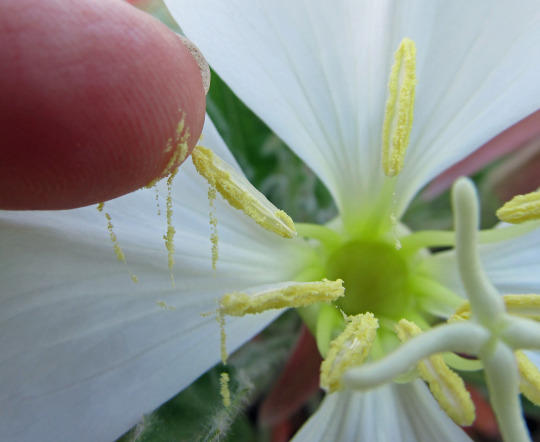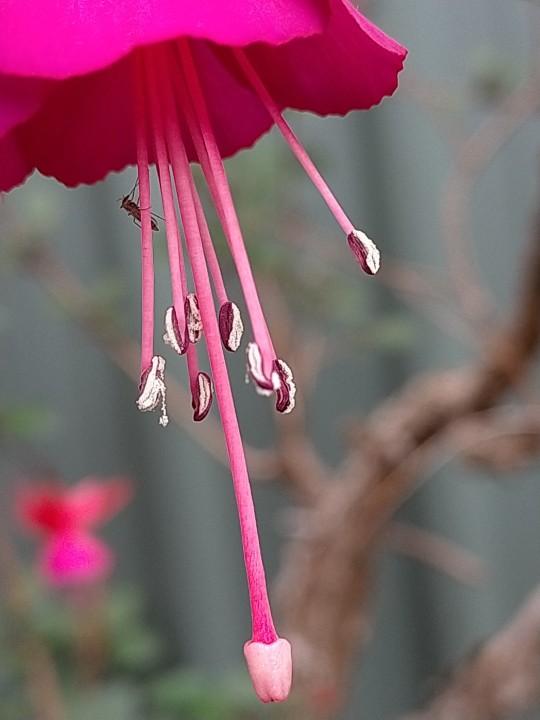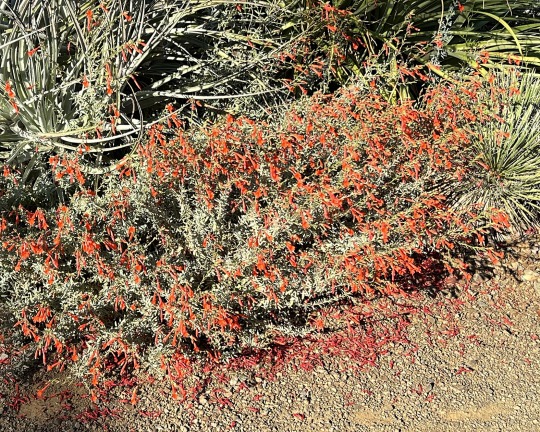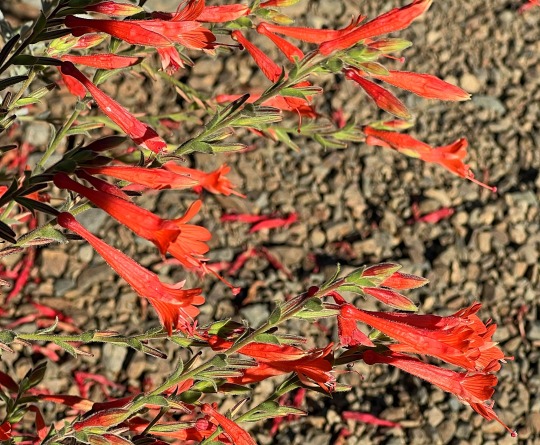#onagraceae
Explore tagged Tumblr posts
Text

Garofanino di Fleischer (Chamaenerion fleischeri (Hochst.) Fritsch (= Epilobium f.), Onagraceae) (vecchia dia)
25 notes
·
View notes
Text
#2318 - Epilobium glabellum


From the Greek epi- ‘upon’ and lobos ‘a pod’ because the flowers appearing to be growing on the seed pod. glabellum means 'hairless'.
A willowherb endemic to alpine areas on North and South Island, and Auckland Island. More common on South Island, which has more mountains. The minute pappate seeds are wind-dispersed.
Mt Ruapehu, North Island Volcanic Plateau, New Zealand
115 notes
·
View notes
Text

Scientific Name: Oenothera speciosa Common Name(s): Pinkladies, pink evening primrose Family: Onagraceae (evening primrose) Life Cycle: Perennial Leaf Retention: Semi-evergreen Habit: Forb USDA L48 Native Status: Native Location: Plano, Texas Season(s): Spring
I’m, like, irrationally obsessed with these sepals.
One peculiar characteristic of Oenothera flowers is the tendency for their sepals to fuse at the tips, forming a pennant to one side of the stem. And I think the ones in this particular patch have more swag than usual. Instead of just plain green, these are injected with yellow (chartreuse?) and bordered with sharp red stripes so they really stand out. It’s like someone who is traditional enough to wear regimental ties yet chic enough to toss them insouciantly to one side. Oh, so good.
#Oenothera speciosa#pinkladies#pink evening primrose#Onagraceae#perennial#semi-evergreen#forb#native#Plano#Texas#spring#flower#calyx#sepal#pink#evening primrose#plantblr
21 notes
·
View notes
Photo

Great Willowherb Epilobium hirsutum Onagraceae
Photograph taken on August 28, 2022, at High Park, Toronto, Ontario, Canada.
#wildflowers of southern ontario#Great Willowherb#Willowherb#purple#Epilobium hirsutum#Onagraceae#High Park#Toronto#Ontario#Canada#Epilobium
39 notes
·
View notes
Text







Bigfruit evening primrose (Oenethera macrocarpa).
10 notes
·
View notes
Text
Another Year of Pollination: Viscin Threads
While we’re on the subject of pollen-gluing mechanisms, there is another material apart from pollenkitt that a limited number of flowering plant families use to link their pollen grains together. It functions, much like pollenkitt, by aiding in the attachment of pollen to visiting animals. However, unlike pollenkitt, it isn’t sticky, oily, or viscous, and is instead more like a series of threads.…

View On WordPress
#bees#birds#Caesalpinioideae#Ericaceae#flowers#fossil record#Lepidoptera#Oenothera#Onagraceae#plant anatomy#plant science research#pollen#pollen grains#pollenkitt#pollinators#Rhododendron#viscin threads#year of pollination
18 notes
·
View notes
Text

Oenothera fruticosa / Southern Sundrops at the Sarah P. Duke Gardens at Duke University in Durham, NC
#Oenothera fruticosa#Oenothera#onagraceae#Southern Sundrops#Narrow-leaved Sundrops#Sundrops#Narrowleaf evening Primrose#Evening Primrose#Narrowleaf Sundrops#Native plants#Native flowers#Plants#Flowers#Nature photography#photographers on tumblr#Sarah P. Duke Gardens#Duke Gardens#Duke University#Durham#Durham NC#North Carolina#🌺🌻
12 notes
·
View notes
Text

Fuchsia sp. detail
18-MAY-2023
Melbourne, Vic
#australia#victoria#melbourne#flower#pink#pink flower#anther#pollen#rosids#myrtales#onagraceae#onagroideae#circaeeae#fuchsia
13 notes
·
View notes
Text


Epilobium canum
This plant is commonly called "California fuchsia", and although it belongs to the same family as Fuchsia (Onagraceae), it is not actually in that genus. It is common in much of California, and it also occurs in other western states of the USA, as well as in northwestern Mexico. It is much admired for the blaze of red it brings in late summer, after many other native species have finished flowering.
-Brian
18 notes
·
View notes
Text
#fireweed#Chamerion angustifolium#Epilobium angustifolium#onagraceae#evening primrose#edible plants#forest starters#fireweed tea#fireweed cord#tea#cord#herbal#medicinal#crafting#plants
3 notes
·
View notes
Text


8/31/24
#plant#flowering plant#common evening-primrose#Oenothera biennis#rosids#Myrtales#Onagraceae#edible plant
0 notes
Text

Garofanino d'acqua (Epilobium hirsutum L., Onagraceae)
45 notes
·
View notes
Text
#2319 - Epilobium pernitens

pernitens means 'shining' - presumably a reference to the glossy leaves.
A compact, creeping herb forming dense patches up to 50cm across Found in the same mountains and islands as Epilobium glabellum, but on moist slopes, usually above the bushline but occasionally lower in open springy meadows.
Mt Ruapehu, North Island Volcanic Zone, New Zealand
12 notes
·
View notes
Text

Scientific Name: Ludwigia octovalvis Common Name(s): Mexican primrose-willow Family: Onagraceae (evening primrose) Life Cycle: Perennial Leaf Retention: Deciduous Habit: Forb USDA L48 Native Status: Native Location: Plano, Texas Season(s): Summer
In spite of its common name, this plant is widely distributed in the world’s warmer regions and is considered native in the southern parts of the U.S. The reddish seed capsules here are about 2″ (50 mm) long, and their size distinguishes L. octovalvis from other Ludwigia species found nearby with similar-looking flowers. The white flowers in the background are swamp smartweed (Persicaria hydropiperoides).
#Ludwigia octovalvis#Mexican primrose-willow#Onagraceae#perennial#deciduous#forb#native#Plano#Texas#summer#flower#yellow#plantblr
26 notes
·
View notes
Text
Willowherb (Epilobium spp.)
It is a well-known pioneer genus, which means it grows in disturbed places, a trait which is demonstrated well by its growth out of a car's wheel well!
However, given the fact that it hasn't bloomed yet, and the geographical location is uncertain, it is difficult to hazard a guess as to its exact species, but this small stem ridge (below) suggests it might be E. tetragonum, which has a square stem and similar seedlings.

Epilobium tetragonum has these lovely flowers!

really can’t get over lichens growing on peoples’ CARS. all this talk of microhabitats and long term stability and preferences about humidity and substrates and how some lichens will only grow in untouched old-growth forests etc etc and there are some of these creatures living on literally the most unpredictable common substrate that changes positions at least twice a day and sometimes travels to completely different biomes. what the hell
#botany#identifying plants in posts#nature#flowers#botanical#plant#plants#science#biology#pioneer species#cars#volkswagen#Epilobium#epilobium tetragonum#onagraceae#botanyshitposts
9K notes
·
View notes
